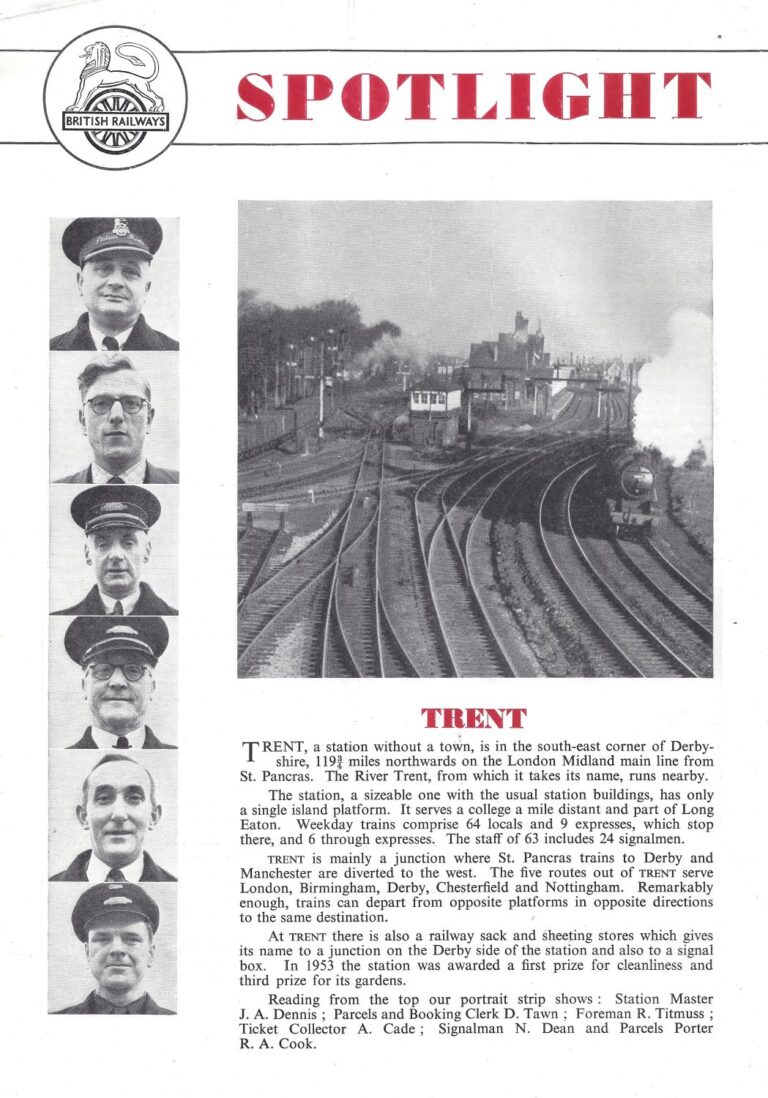Every passing Midland Railway train stopped at Trent and many passengers would change train there. Toilets and refreshment facilities kept busy, especially in the early days when there were no such facilities on trains.
The station’s busiest time was probably World War Two, when its platforms were constantly packed with servicemen catching connections.
Although trains always left a platform in a particular (up or down) direction, the surrounding loops meant their destination could be in the opposite direction. Each platform had a clock-face showing the next departure time and a sign showing the next destination from that platform and the other platform. These were all manually changed for every departure.
With passenger trains, goods trains and long coal trains, on multiple lines in different directions, all converging on Trent, signalling was major and vital operation.
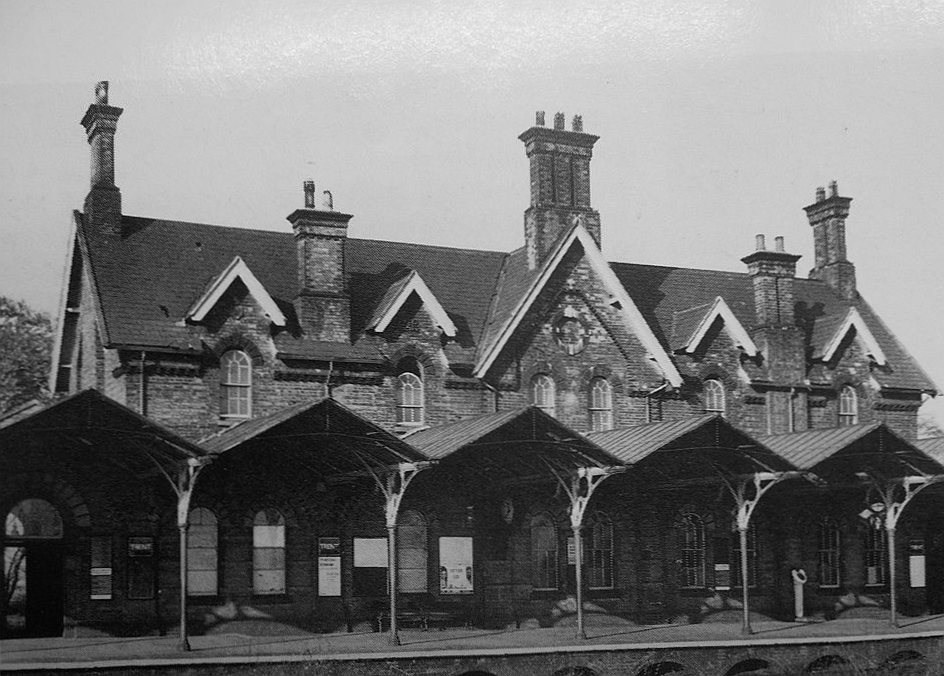
There were signal boxes at the junctions at Trent (by the river), Trent North, Trent South, Long Eaton, Sawley, Sheet Stores and North Erewash, as well as several level crossings. By 1890 these were connected by telephone and telegraph. The signalmen at Sheet Stores and Trent Junction, as well as the North and South boxes, were part of the Trent Station establishment and worked the same 24-hour shift system. As well as ensuring safety and keeping the passengers services on time, they had to try to keep loose-coupled goods train moving, especially as they approached any up-slope.
Porters would help passengers with heavy luggage, but also moved mailbags, newspaper bundles, did some cleaning and answered passengers’ questions. They also had to light and put out the gas lamps around the station and down Black Pad.
The booking office staff were also responsible for paying all the wages.
Other staff were required to connect and disconnect carriages and trucks, or to climb the signal gantries to top up the oil lamps. At the Southern end of the platform the staff kept a flower garden.
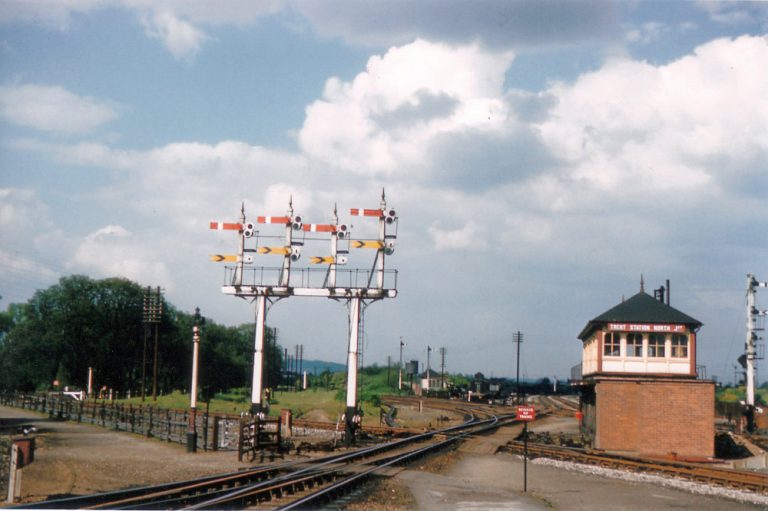
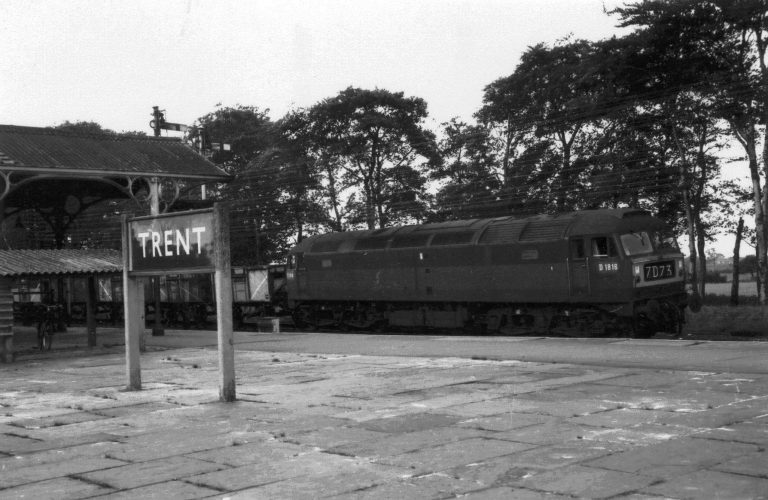
Robert C. Himsworth has allowed us to use this picture from his collection of railway photographs. It shows a Class 47 D 1816 heading a goods train passing Trent Station.
© Robert C. Himsworth
Possibly the oldest survivor of those who worked at Trent Station is John Dabson, who was born in 1922, and now lives in Norfolk. He recalls that his mother worked as a cleaner at Trent Station from approximately 1935. When the second world war began she became a porteress, and remained there till 1946. John himself had attended Derby Road School in Long Eaton, and on leaving in August 1936, he tried to get a job at Toton. They would not accept him till he was 16. His mother told the Trent stationmaster this, and it was he who arranged for John to become a signal box lad at Trent. This was the start of a long career in the railways, gradually climbing the ladder of promotion until he ended up as area controller working out of the new power box at Euston, retiring in 1984.
Duties of a Booking Clerk
David Barrett wrote “I had the privilege to be one of the last Booking Clerks there and acted as a relief at Sawley and Attenborough when they needed it. I had started my railway career at Hathern station where I had the responsibility of running the station, both passenger and goods services, whilst the Station Master Mr Leddera was working at Kegworth, the next station along the line. Trent was a busy station with the principal booking clerk being responsible for calculating and paying the signalmen of different grades in over 10 boxes in the area and the permanent waymen and then the men employed at the sheet stores nearby together with then having to pay these men in cash every week . A tremendous responsibility which unfortunately affected the health of the clerk . My principle memories are of the express trains, the Thames Clyde being amongst them as it still stopped on Sundays to provide connections to and from Nottingham and Derby. There was a loop line at the north of the station which was used by the Queen when she overnighted when visiting the area.’’
Alan Johnson sent in this photograph, which he took with his box camera at Trent on January 2, 1958. The engine (423840) had just come round the loop newly re-painted from the Derby Works. He recalls his engine-numbering days. “On arrival at Trent from Nottingham Midland Station I would cross the line and follow a dirt track that led towards a closed gate, that I believe led to a firing range. At that point I climbed the rail bank and settled with my pop and sandwiches and proceeded with my train spotting. Clearly visible from there was a signal box prior to the entrance to Red Hill tunnel. My reason for picking this spot was that in between the passing of trains I would pop down and close the gate for passing motorists and frequently be given a few coppers in thanks. Oh happy days!”
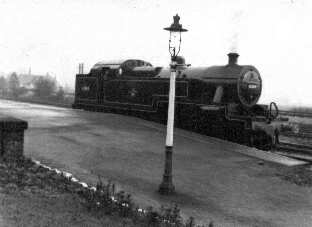
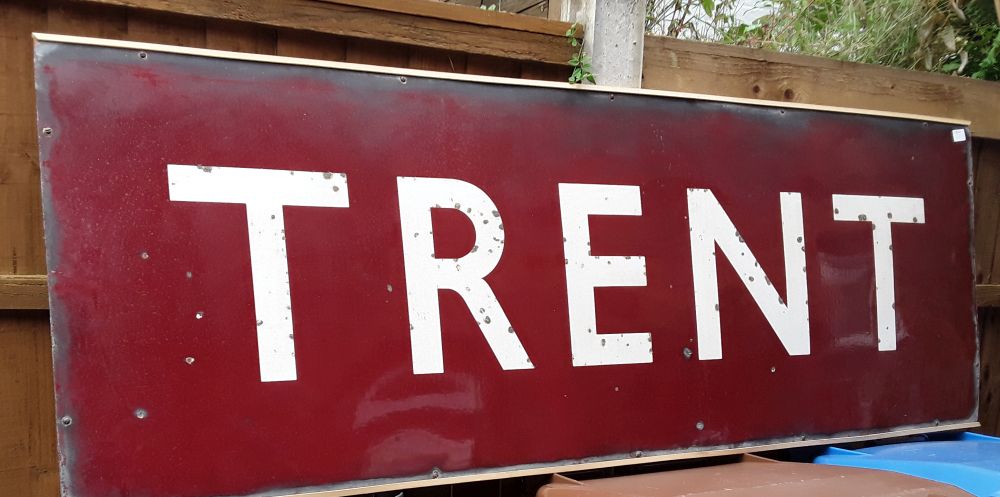
Mike Heath believes this Trent sign in his possession is a ‘running in’ board. There would have been two of these enamelled signs at both the North and South ends of the station.
In April 1954 British Railway’s Eastern Region newsletter featured Trent Station staff:
